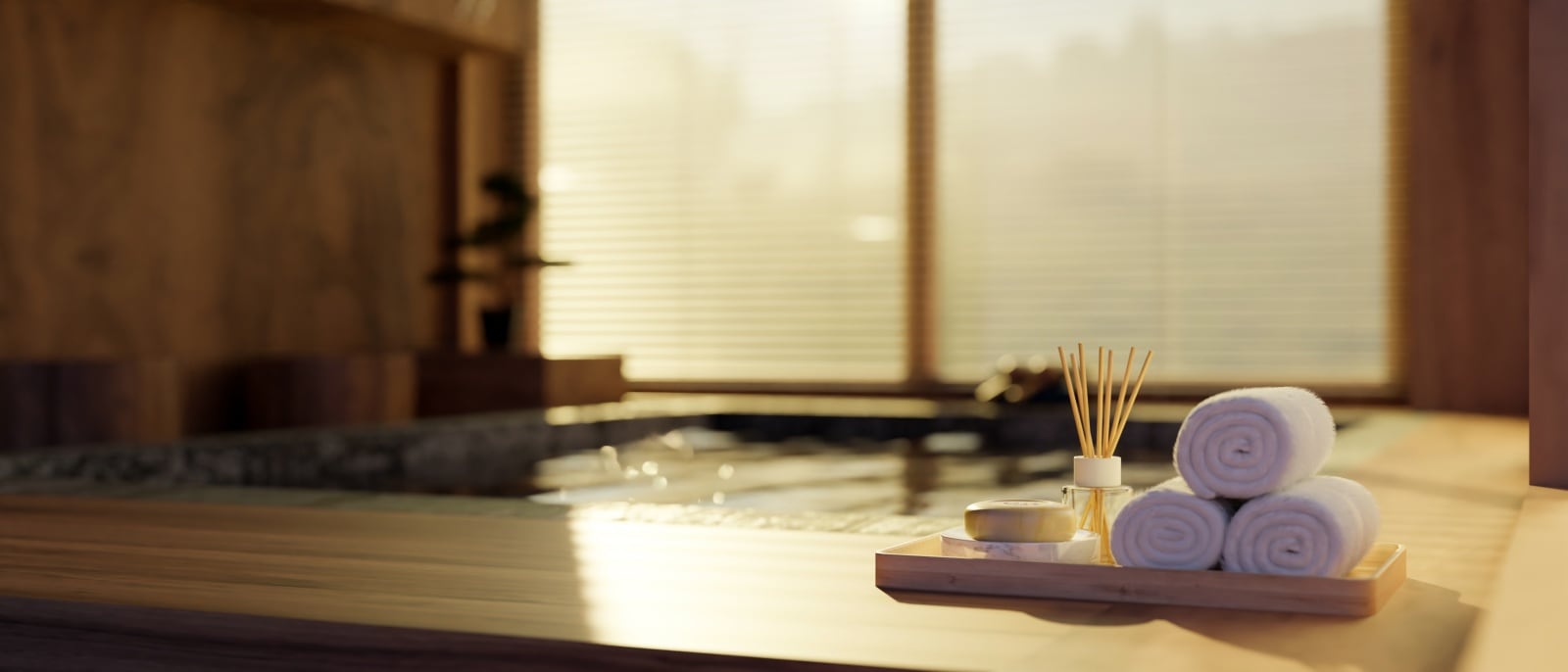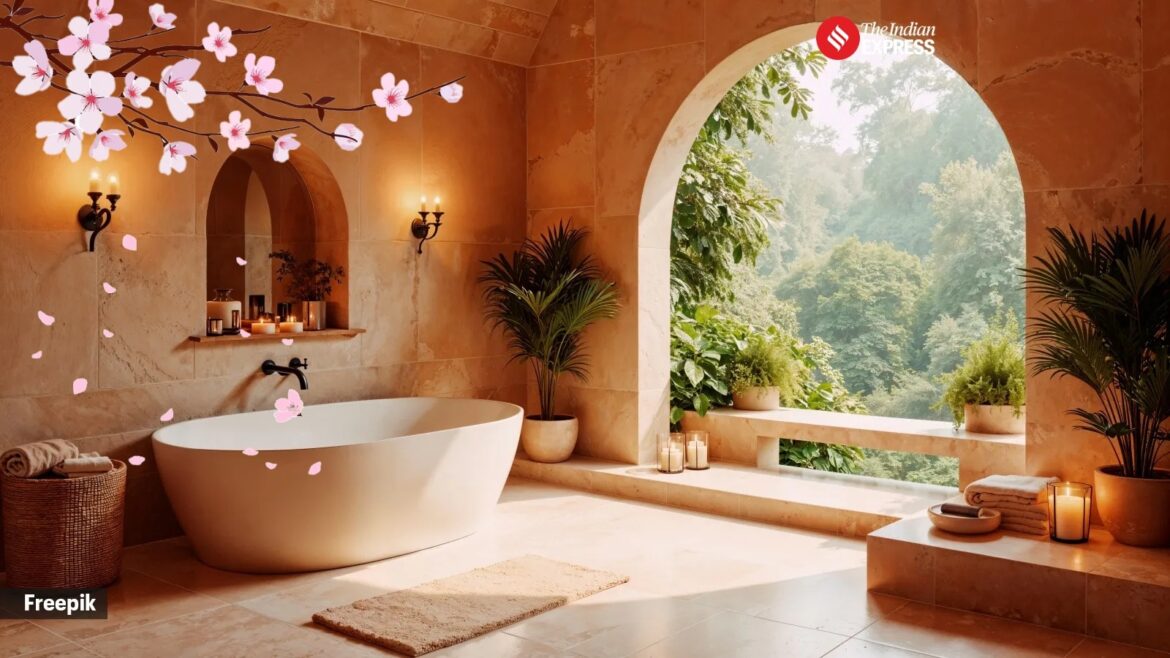The Japanese have an impressive way of life, deeply influenced by culturally rooted theories and principles. This sensibility extends into their interiors, and bathrooms are no exception. Step into any Japanese bathroom and you’ll see how seriously they take cleanliness and purity.
In fact, a 2025 real estate survey revealed that nearly 80% of Japanese apartment seekers preferred the bathing area and toilet to be separate, underscoring their strong choices and preferences.
Their bathrooms draw inspiration from philosophies like kanso (simplicity), shizen (naturalness), and wabi-sabi (embracing imperfection), all aimed at cultivating calm, mindfulness, and a harmonious connection to nature. These beliefs turn everyday bathing into a holistic ritual of renewal and reflection.:
Story continues below this ad
1. Embrace natural materials
The Japanese like the elements of nature (shizen) in their bathroom spaces like stone, bamboo, and even wood. These elements are believed to connect the space to the outdoors, creating tactile warmth and grounding. Furthermore, the use of untreated wood and stone textures add to the sensory calm.
2. Stick to a neutral palette
The Japanese like to keep their bathrooms splashed in soft, muted tones like beiges, warm greys, and subdued greens. The decor inspiration aligns with the Japanese philosophy of kanso, which embraces simplicity and the inherent purity of an object or space. With limited visual noise, natural light’s nuances shape the mood gently throughout the day.
 In Japanese culture, bathing isn’t just a cleansing activity; its a sacred ritual.
In Japanese culture, bathing isn’t just a cleansing activity; its a sacred ritual.
3. Incorporate greenery
Plants such as ferns, moss, and bonsai trees bring life and freshness, embodying the seamless integration of indoors and nature prevalent in Japanese design. The benefits are multifacetory with several studies supporting indoor greenery. From purifying air and adding to the aesthetics, to enhancing productivity, and refreshing the mood, the pros are endless.
4. Define wet and dry areas
Traditional Japanese bathrooms distinctly separate the toilet area from bathing and dressing spaces. The Japanse believe in keeping their relaxing space pure and thus clean their body with before before entering the soaking tub (ofuro). This practical layout is also hygienic and prevents unwanted mold and mildew growth.
Story continues below this ad
5. Turn bathing into ritual
For the Japanese, bathing isn’t just a cleansing activity; its a sacred ritual. They soak in deep wooden tubs called ofuro, which are designed to promote rest and rejuvenation. After washing outside the tub, people soaking in hot water and relax. This practice is linked to lowering cortisol levels and enhancing sleep quality in scientific studies.
6. Celebrate imperfection with Wabi-Sabi
Wabi-sabi is the art of finding beauty in imperfection and impermanence. In bathroom design, it means valuing natural wood grains, uneven stone surfaces, and handcrafted pottery which celebrate authenticity and encourage acceptance.
7. Use soft lighting and water elements
Warm lighting helps recreate the ambient glow of Japanese hot springs, also known as onsens. While is strikes a nostalgic chord for Japanese culture enthusiasts, the practice also finds solid ground in science. Several studies support that warm lighting helps alleviate stress levels, and stay calm. Adding small water features, like pebble trays with gentle flowing water, further gives a touch of healing soundscapes.



AloJapan.com